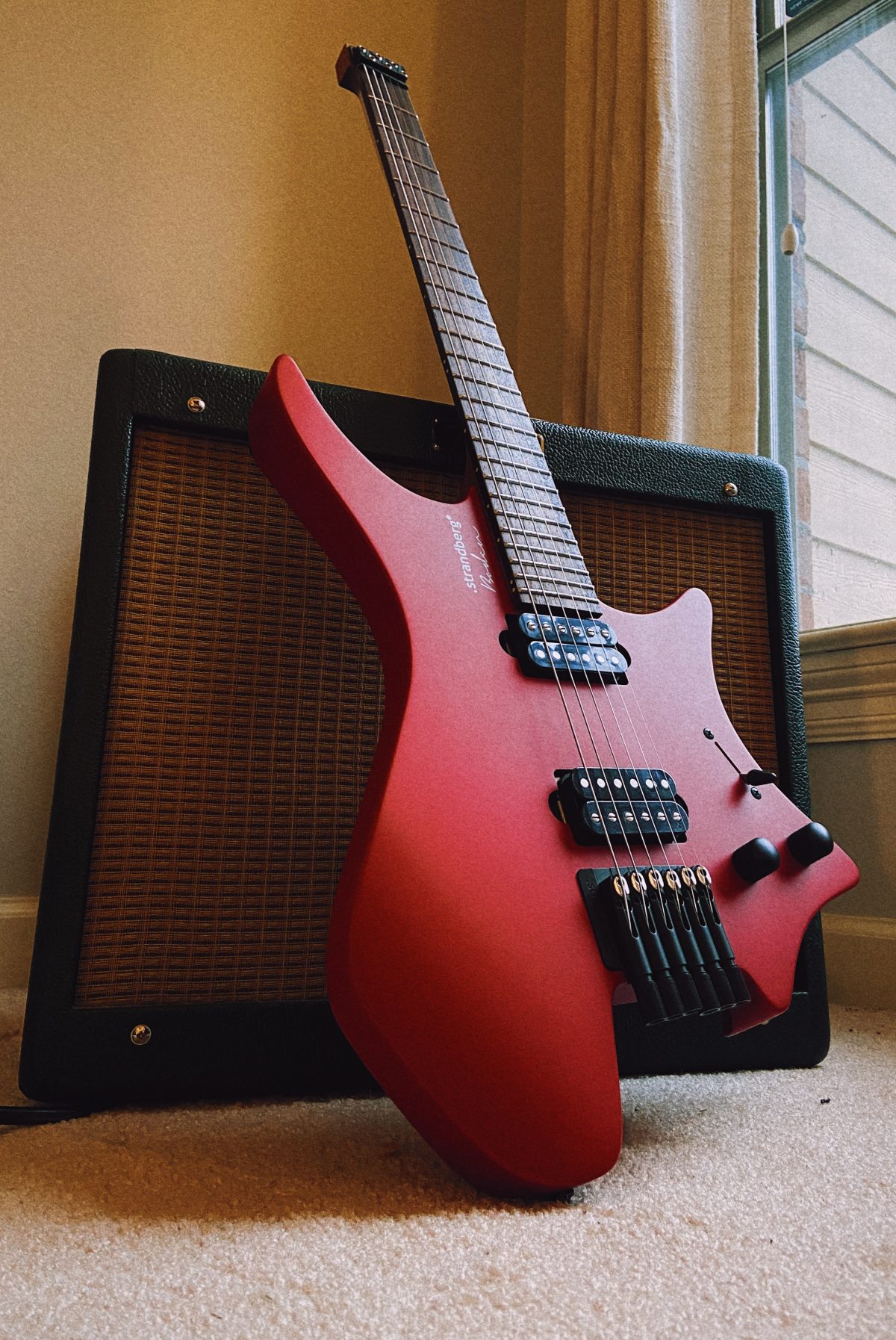.strandberg* (more commonly known as Strandberg) has long been been heralded as one of the greats in the headless guitar world and for good reason. The comfort of these guitars combined with the highly playable EndurNeck profile made these an instant modern classic. With the release of the Boden Essential line, Strandberg looks to get their mighty guitars into the hands of even more players with a sub $1000 price point! Fear not — corners were not cut on the features you are most thirsty for. You will still find a lightweight body, comfortable ergonomic shape, a headless design with proprietary EGS hardware, and the classic EndurNeck profile.
As a composer or producer, I am often looking for instruments that can get versatile tones into my hands without having to invest in professional grade instruments. The Boden Essential 6 fills this space perfectly as both a highly playable guitar and a customizable platform to find your perfect tone. Let’s talk some pros and cons of using this axe in the studio.
No Djent Detected, Coast is Clear
The Boden Essential has a lot going for it: As we have already touched on, the neck, the ergonomic design, and proprietary hardware all bring the quality you have come to expect from Strandberg. This means this axe is fast to grab, comfortable to use in the studio, easier to use at a desk with its small design, and can quickly get you to the results you are looking for. No more knocking over your coffee mug as you swing around to adjust your preamps!

For me, the one downside of this guitar was the pickups. The included OEM pickups were designed collaboratively with Strandberg, but they are certainly hot. While this is on brand for Strandberg, these pickups do not necessarily help the guitar become a versatile studio tool.
With that being said, what these pickups do, they do well. They can achieve a nice, thick saturation, they take well to pedals and plug-ins, and come complete with a 5-way blade switch for multiple tonal options. I found that I mainly stuck to positions 1, 2, and 5, but there is plenty to be explored.
Let’s jump into some examples of how I used this guitar in the studio!
It’s Giving… Emo?
For this first clip, I made some promotional material for the Boden Essential. I was entirely in the box, pairing the Boden Essential with Plini’s amp plug-in (check out his signature Strandberg here), loads of effects, and additional strings and pads from Kontakt, all mixed and mastered in Ableton! Check out a short version above.

There are six different guitar tracks, each treated slightly differently. Each pickup position was used in this exercise to help diversify the tones. The final sweetening on the track was done with iZotope’s Ozone. Some of the guitar tracks were re-amped with a Fender Blues Junior for extra analog warmth.
In our next example (above), I went for a more post-rock vibe. This time the guitars are amped in the box with Amplitube. The amp setup is very minimal, containing a stereo Marshall-style setup with low gain. This guitar makes amps break up really quickly and I was going for a more crunchy sound. EQs are mostly done with Ableton plug-ins here. I had some extra processing power, so I employed Ozone again as my compressors, and it worked wonderfully. This was more of an experiment and can be pretty hard on your machine as Ozone is an incredibly powerful plug-in, but here it works nicely.

What Say Ye on the Boden Essential?
The Boden was so easy to play in the studio and the tonal combinations available to you work well for heavier styles of production or composition. I will probably look into changing these humbuckers to something lower output in the future. I’d opt for something smooth enough to handle lower output needs but still gritty enough for the heavier times, perhaps something from Fishman.
Check out a longer video of my thoughts below!
For more studio tips and ideas, check out our Studio Solutions page!




Leave a Reply